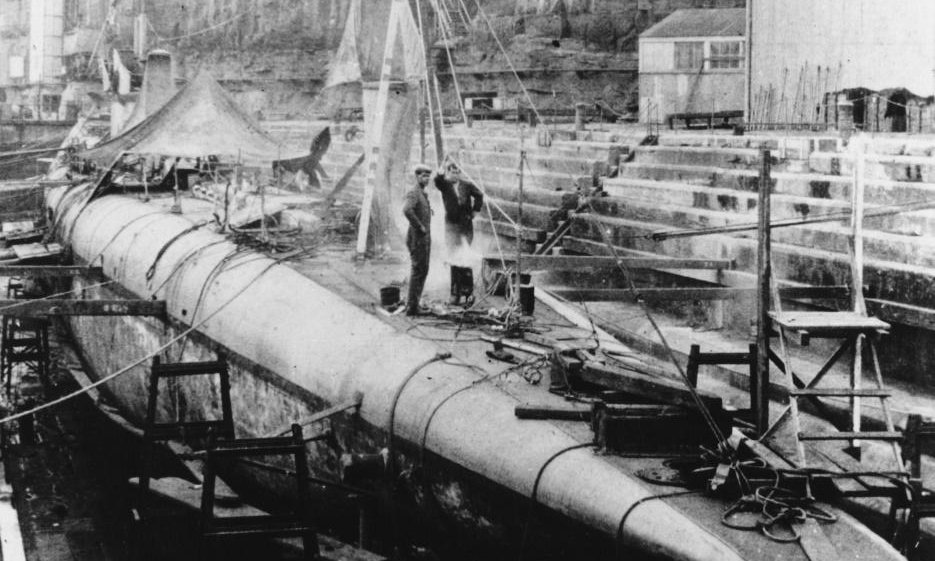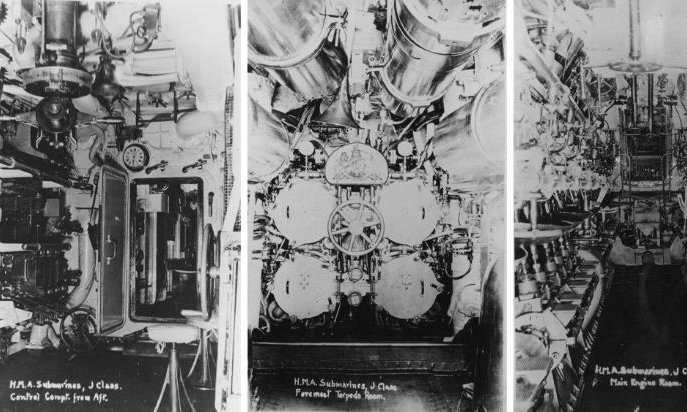J Class Submarines
Introduction
Born out of a piece of misinformation, J Class submarines nevertheless had a distinguished record in both the British and Australian Navies. Today, four of the vessels lie at the bottom of Bass Strait and two lie in Port Phillip Bay, Victoria.
The Royal Navy developed the J Class shortly before World War I, following incorrect reports that Germany was planning submarines that were fast enough to operate alongside surface fleets. Seven were produced.
Although they were larger and more powerful than previous British submarines – the J Class were capable of 19 knots (35 km/h) surfaced and 9.5 knots (17.6 km/h) submerged – they were no match for RN surface vessels and operated independently during the war.
The J Class design featured four bow tubes and two beam tubes for 18-inch (457 mm) torpedoes, becoming the first British submarines to carry four bow tubes. They could dive to a depth of 91 metres and carried five officers and 40 seamen.

Image provided by Royal Australian Navy
HMAS J4 in Fitzroy Dock in Cockatoo Island, Sydney

Image provided by Royal Australian Navy
J Class Control Room, Forward Torpedo Compartment and Engine Room
J Class submarines took part in actions against German surface vessels and submarines off the Tyne and Gibraltar. Between them, the submarines sank a U-boat, and heavily damaged two battleships. HMS J6 was lost to friendly shelling.
After the war, the six surviving vessels were gifted to the Royal Australian Navy, arriving in Sydney on 15 July 1919.
It was immediately obvious the submarines were urgently in need of maintenance and repair. Four boats successfully completed peacetime exercises during 1920. Despite a rigorous program of refitting, by 1921 a report on the J Class condition was damning. In summary it said:
- J1 Alongside in Sydney Battery unsafe and must be replaced (could not dive).
- J2 Alongside in Sydney with major engine and battery defects. Scheduled to enter refit at Cockatoo Island when J3 has completed its repairs.
- J3 At Cockatoo Island in Sydney. Most defects made good, new batteries arrived Cockatoo and unpacked.
- J4 Operational and in Service, battery due for replacement December 1921.
- J5 Operational and in Service, battery due for replacement February 1922.
- J7 New battery due in May, defects will be made good by December.
In early 1922, the operational boats completed exercises at Geelong and J3 and J4 participated in fleet exercises in Hobart, but it was clear the fleet had reached the end of its usefulness. All the boats were progressively de-stored and sold off for disposal. J1, J2, J4, and J5, were scuttled in Bass Strait and the remaining two submarines, J3 and J7, were sunk inside Port Phillip Bay. J3 at Swan Island and J7 at the Sandringham Yacht Club where it continues to serve as a breakwater.